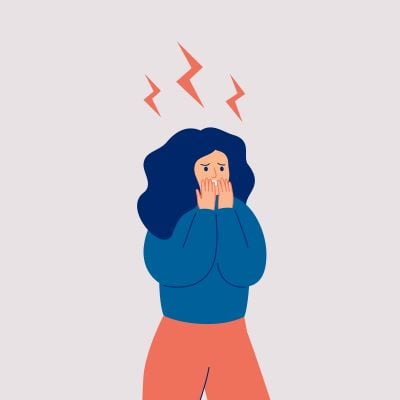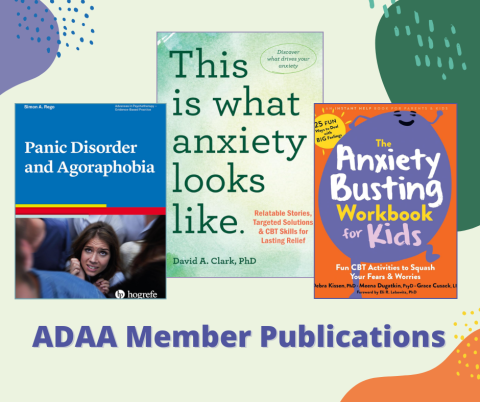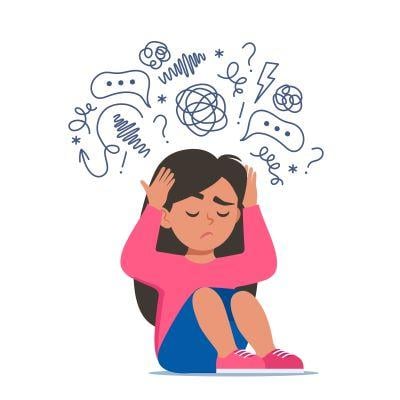If Anxiety is in my Brain, why is my Heart Pounding? A Psychiatrist Explains the Neuroscience and Physiology of Fear
If Anxiety is in my Brain, why is my Heart Pounding? A Psychiatrist Explains the Neuroscience and Physiology of Fear

In the face of a perceived threat, your body often activates a fight-or-flight response. Heart in your throat. Butterflies in your stomach. Bad gut feeling. These are all phrases many people use to describe fear and anxiety. You have likely felt anxiety inside your chest or stomach, and your brain usually doesn’t hurt when you’re scared. Many cultures tie cowardice and bravery more to the heart or the guts than to the brain.
But science has traditionally seen the brain as the birthplace and processing site of fear and anxiety. Then why and how do you feel these emotions in other parts of your body?
I am a psychiatrist and neuroscientist who researches and treats fear and anxiety. In my book “Afraid,” I explain how fear works in the brain and the body and what too much anxiety does to the body. Research confirms that while emotions do originate in your brain, it’s your body that carries out the orders.
Fear and the brain
While your brain evolved to save you from a falling rock or speeding predator, the anxieties of modern life are often a lot more abstract. Fifty-thousand years ago, being rejected by your tribe could mean death, but not doing a great job on a public speech at school or at work doesn’t have the same consequences. Your brain, however, might not know the difference.
There are a few key areas of the brain that are heavily involved in processing fear.
When you perceive something as dangerous, whether it’s a gun pointed at you or a group of people looking unhappily at you, these sensory inputs are first relayed to the amygdala. This small, almond-shaped area of the brain located near your ears detects salience, or the emotional relevance of a situation and how to react to it. When you see something, it determines whether you should eat it, attack it, run away from it or have sex with it.
Threat detection is a vital part of this process, and it has to be fast. Early humans did not have much time to think when a lion was lunging toward them. They had to act quickly. For this reason, the amygdala evolved to bypass brain areas involved in logical thinking and can directly engage physical responses. For example, seeing an angry face on a computer screen can immediately trigger a detectable response from the amygdala without the viewer even being aware of this reaction.
The hippocampus is near and tightly connected to the amygdala. It’s involved in memorizing what is safe and what is dangerous, especially in relation to the environment – it puts fear in context. For example, seeing an angry lion in the zoo and in the Sahara both trigger a fear response in the amygdala. But the hippocampus steps in and blocks this response when you’re at the zoo because you aren’t in danger.
The prefrontal cortex, located above your eyes, is mostly involved in the cognitive and social aspects of fear processing. For example, you might be scared of a snake until you read a sign that the snake is nonpoisonous or the owner tells you it’s their friendly pet.
Although the prefrontal cortex is usually seen as the part of the brain that regulates emotions, it can also teach you fear based on your social environment. For example, you might feel neutral about a meeting with your boss but immediately feel nervous when a colleague tells you about rumors of layoffs. Many prejudices like racism are rooted in learning fear through tribalism.
Fear and the rest of the body
If your brain decides that a fear response is justified in a particular situation, it activates a cascade of neuronal and hormonal pathways to prepare you for immediate action. Some of the fight-or-flight response – like heightened attention and threat detection – takes place in the brain. But the body is where most of the action happens.
Several pathways prepare different body systems for intense physical action. The motor cortex of the brain sends rapid signals to your muscles to prepare them for quick and forceful movements. These include muscles in the chest and stomach that help protect vital organs in those areas. That might contribute to a feeling of tightness in your chest and stomach in stressful conditions.
The sympathetic nervous system is the gas pedal that speeds up the systems involved in fight or flight. Sympathetic neurons are spread throughout the body and are especially dense in places like the heart, lungs and intestines. These neurons trigger the adrenal gland to release hormones like adrenaline that travel through the blood to reach those organs and increase the rate at which they undergo the fear response.
To assure sufficient blood supply to your muscles when they’re in high demand, signals from the sympathetic nervous system increase the rate your heart beats and the force with which it contracts. You feel both increased heart rate and contraction force in your chest, which is why you may connect the feeling of intense emotions to your heart.
In your lungs, signals from the sympathetic nervous system dilate airways and often increase your breathing rate and depth. Sometimes this results in a feeling of shortness of breath.
As digestion is the last priority during a fight-or-flight situation, sympathetic activation slows down your gut and reduces blood flow to your stomach to save oxygen and nutrients for more vital organs like the heart and the brain. These changes to your gastrointestinal system can be perceived as the discomfort linked to fear and anxiety.
It all goes back to the brain
All bodily sensations, including those visceral feelings from your chest and stomach, are relayed back to the brain through the pathways via the spinal cord. Your already anxious and highly alert brain then processes these signals at both conscious and unconscious levels.
The insula is a part of the brain specifically involved in conscious awareness of your emotions, pain and bodily sensations. The prefrontal cortex also engages in self-awareness, especially by labeling and naming these physical sensations, like feeling tightness or pain in your stomach, and attributing cognitive value to them, like “this is fine and will go away” or “this is terrible and I am dying.” These physical sensations can sometimes create a loop of increasing anxiety as they make the brain feel more scared of the situation because of the turmoil it senses in the body.
Although the feelings of fear and anxiety start in your brain, you also feel them in your body because your brain alters your bodily functions. Emotions take place in both your body and your brain, but you become aware of their existence with your brain. As the rapper Eminem recounted in his song “Lose Yourself,” the reason his palms were sweaty, his knees weak and his arms heavy was because his brain was nervous.![]()
Arash Javanbakht, Associate Professor of Psychiatry, Wayne State University
This article is republished from The Conversation under a Creative Commons license. Read the original article.




















